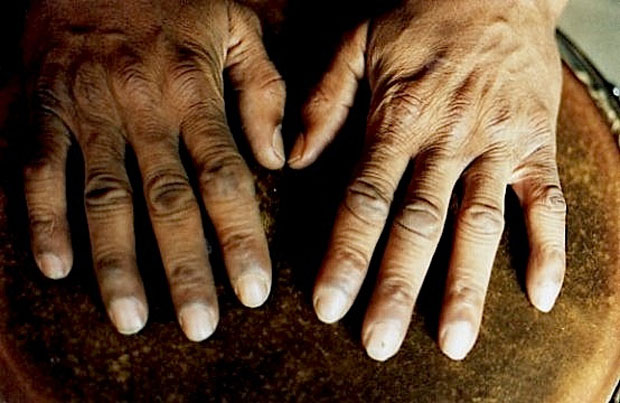Home » Jazz Articles » Cymbalism » Don Alias and Nina Simone
Don Alias and Nina Simone

Don Alias and Nina Simone
It was Gene Perla who called me up one day and said, "Hey man, why don't you just try to do this gig with Nina Simone?" I said, "Wow! Nina Simone, are you kidding?"
At that time I was fearless. Play drums with Nina Simone? Sure. I remember our first gig was in New England somewhere, I think Providence, Rhode Island. We were supposed to have a rehearsal since I was new to the band. The band was still waiting for Nina when the audience began to walk into the concert hall. She came in so late that the actual gig became the rehearsal.
When Nina walked in she really looked at me. You know, she looked me up and down and right through me. Here I was this brown skinned, non-African-looking guy. It was at a time, though, when everyone wore dashikis and Afros, even the white guys. She had asked all her band members to wear an African medallion, so there I was in my black dashiki, semi-Afro and a glittering continent around my neck.
Nina asked me where I was born and I replied, "On 136th Street and 7th Avenue in Harlem." There was no response. Then she just started telling me what she wanted to hear musically. She said, "In this tune you're gonna play this and in this tune you're gonna play that" and on and on, until everything was a blur.
She counted off the first tune and we rolled into the set smoothly. I was just playing on gut feeling. She stood on the stage and called out, "Let's play in a different key." She'd actually do this and we'd have to transpose on the spot. Then she would sing protest and Black revolutionary songs, her voice deep as brown, blues and blacks could go. After I finished playing, she looked at me and said, "You know somethin'? You're blacker than you look." Of course that was supposed to be a compliment.
I never thought that I'd ever get the chance to play in Europe, but a few months later here we were, Gene Perla, Weldon Irvine, Al Shachman and myself with Nina Simone. Our first stop was Dublin, where streets were cobblestoned and there was a lot of green everywhere. It was there that I learned how to play heavy and loud, and for the first time I learned the true meaning of "dynamics of music," as well as the true meaning of a good dark Lager beer.
When we played for these audiences you could hear a pin drop. It was just a wonderful, wonderful experience covering everything from "I Love You Porgy" to "Black is The Color of My True Love's Hair." What was even more wonderful was that Miles Davis opened up for us.
We would do this song, "West Wind," written by Miriam Mekaba, and before I took my solo, Nina would say," Drums are like your heartbeat and you know you can't live without your heartbeat." That phrase had a special meaning to me that even today I use it as my motto, but that's another story.
Anyway, I was playing "West Wind" when I caught Miles staring at me from offstage. I felt kind of nervous and kept wondering why he was staring so intensely. You have to keep in mind that Miles had always been my hero, my idol. I grew up with all his records like 'Round About Midnight, The Birth of the Cool, Dig...you name it. I could hum John Coltrane's tenor solo on "'Round About Midnight," and I knew Steaming and Relaxing by heart.
I listened to all those 1950s records by Miles and now this man was watching me. I found out later that Nina had gone over to the side of the stage and said to somebody," I hope Miles Davis doesn't steal my drummer."
But he did, of course...
Photo Credit
Melanie Futorian
< Previous
Infra-Rae: Ronnie Cuber Meets The Bee...
Next >
Elastic Aspects
Comments
Tags
Don Alias
Cymbalism
Melanie Futorian
United States
Gene Perla
Nina Simone
Weldon Irvine
Miles Davis
John Coltrane
For the Love of Jazz
 All About Jazz has been a pillar of jazz since 1995, championing it as an art form and, more importantly, supporting the musicians who create it. Our enduring commitment has made "AAJ" one of the most culturally important websites of its kind, read by hundreds of thousands of fans, musicians and industry figures every month.
All About Jazz has been a pillar of jazz since 1995, championing it as an art form and, more importantly, supporting the musicians who create it. Our enduring commitment has made "AAJ" one of the most culturally important websites of its kind, read by hundreds of thousands of fans, musicians and industry figures every month.



















